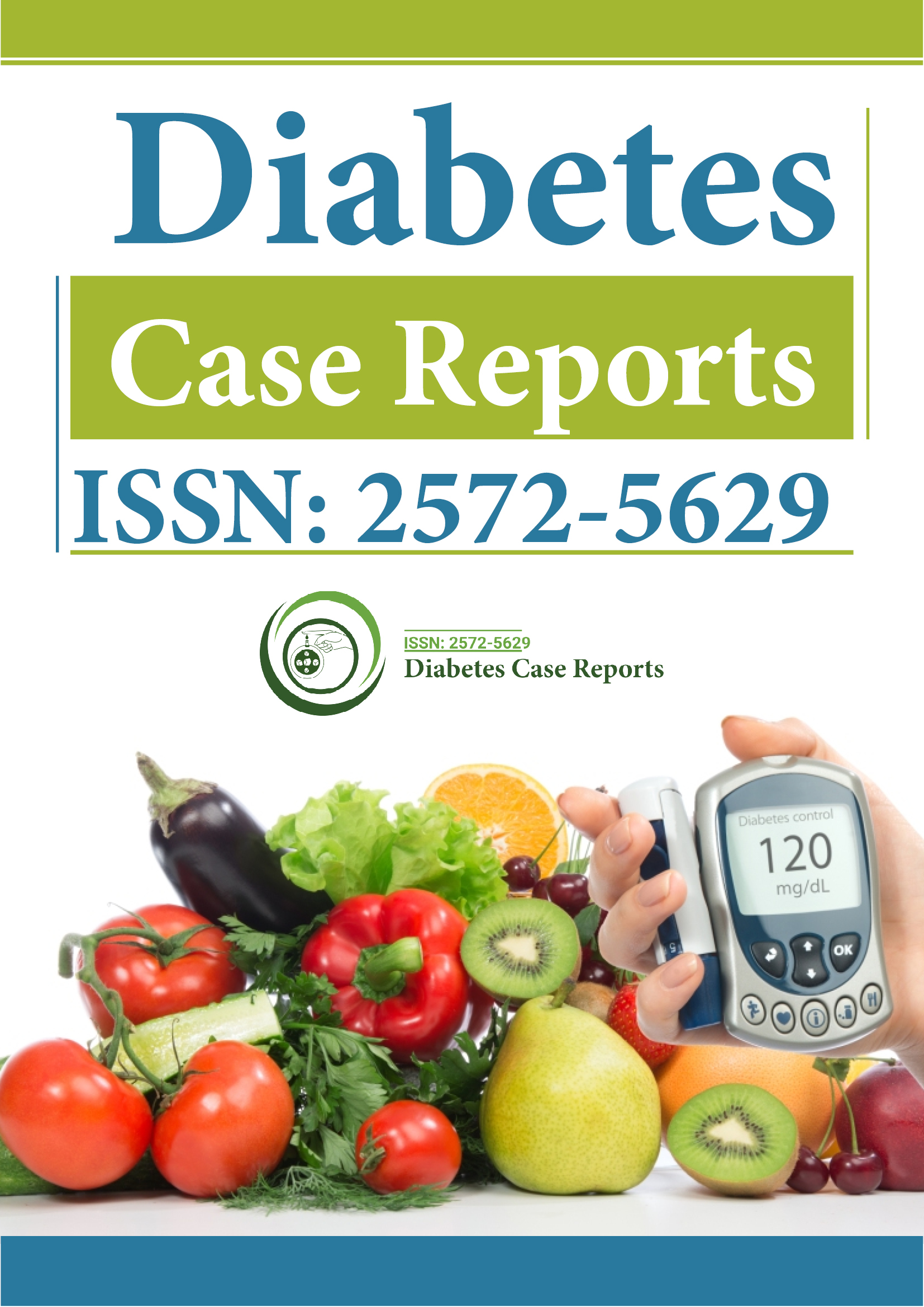Indexed In
- RefSeek
- Hamdard University
- EBSCO A-Z
- Euro Pub
- Google Scholar
Useful Links
Share This Page
Journal Flyer

Open Access Journals
- Agri and Aquaculture
- Biochemistry
- Bioinformatics & Systems Biology
- Business & Management
- Chemistry
- Clinical Sciences
- Engineering
- Food & Nutrition
- General Science
- Genetics & Molecular Biology
- Immunology & Microbiology
- Medical Sciences
- Neuroscience & Psychology
- Nursing & Health Care
- Pharmaceutical Sciences
Commentary - (2023) Volume 8, Issue 6
Evolution of LADA Treatment: From Lifestyle Changes to Insulin Therapy
Owusu Betancourt*Received: 01-Nov-2023, Manuscript No. DCRS-23-23480; Editor assigned: 03-Nov-2023, Pre QC No. DCRS-23-23480(PQ); Reviewed: 23-Nov-2023, QC No. DCRS-23-23480; Revised: 01-Dec-2023, Manuscript No. DCRS-23-23480(R); Published: 08-Dec-2023, DOI: 10.35841/2572-5629-23.8.186
Description
Latent Autoimmune Diabetes in Adults (LADA) is a distinctive and relatively less understood form of diabetes that typically emerges during adulthood and progresses gradually over time. Often referred to as "type 1.5 diabetes," LADA shares characteristics with both type 1 and type 2 diabetes, making it a unique challenge in the realm of diabetes management. This condition arises when the body's immune system mistakenly targets and damages the insulin-producing beta cells in the pancreas, leading to reduced insulin production. However, unlike the rapid onset of type 1 diabetes seen in children and adolescents, LADA presents a slower, more insidious development of the disease, which can lead to initial misdiagnoses and unique treatment challenges. One of the distinguishing features of LADA is its onset in adulthood, typically occurring in individuals over the age of 30. This age factor often leads to initial misdiagnoses as type 2 diabetes, especially in lean individuals who are physically active or those who experience unexplained weight loss. Many healthcare providers might mistake LADA for type 2 diabetes due to the older age at onset and the presence of some remaining insulin production. This initial misdiagnosis can delay the implementation of appropriate treatment strategies, potentially impacting the long-term health and well-being of individuals with LADA. It is important for every individual diagnosed with type 2 diabetes, particularly those who do not fit the typical profile of type 2 diabetes patients, to consider the possibility of LADA. This includes individuals who are lean, physically active, or have experienced unexplained weight loss. Such individuals should engage in open and thorough discussions with their healthcare providers to reevaluate their diabetes diagnosis and develop a personalized treatment plan tailored to their unique needs.
The management of LADA is a complex and evolving process. To effectively address this condition, a personalized approach is essential. Initially, lifestyle modifications play a pivotal role. These modifications include regular physical activity, maintaining a healthy body weight, adopting a balanced and nutritious diet, and abstaining from smoking. These lifestyle changes can help manage blood sugar levels and slow the progression of the disease. In some cases, healthcare providers may prescribe oral medications to assist in blood sugar control. However, as LADA progresses, the pancreas's ability to produce insulin continues to decline. This ultimately necessitates the introduction of insulin therapy. Unlike type 1 diabetes, where insulin therapy is often initiated shortly after diagnosis, individuals with LADA may be able to manage their condition without insulin for a period of time. The timing and type of insulin therapy required will vary from person to person and will be determined based on factors such as C-peptide levels and overall glycemic control. C-peptide levels serve as a valuable tool for guiding treatment decisions in LADA. C-peptide is a molecule that is produced alongside insulin. Measuring C- peptide levels can provide insights into the functioning of the remaining beta cells in the pancreas.
Based on C-peptide values, treatment strategies are categorized into three broad groups
C-peptide levels <0.3 nmol/L: Individuals in this category typically benefit from a multiple-insulin regimen, similar to the management approach for type 1 diabetes.
C-peptide values ≥0.3 and ≤0.7 nmol/L: This is often considered a "gray area" where a modified treatment approach, similar to that used in type 2 diabetes, may be applied. This approach combines insulin therapy with other medications and lifestyle modifications to manage beta-cell dysfunction and reduce the risk of diabetes-related complications.
C-peptide values >0.7 nmol/L: In this category, individuals are managed with a modified type 2 diabetes treatment approach. However, close monitoring of C-peptide levels remains essential to adjust the treatment plan as needed, acknowledging the potential for progressive beta-cell loss in LADA.
Conclusion
LADA represents a unique and complex form of diabetes that warrants careful consideration and individualized management. This condition, often mistaken for type 2 diabetes due to its later onset and residual insulin production, requires a tailored approach that may evolve over time. While lifestyle modifications and oral medications may be effective in the early stages, insulin therapy becomes necessary as the disease progresses. Regular monitoring of C-peptide levels is essential in guiding treatment decisions. Consistent care and vigilant monitoring of the disease's progression are essential to mitigate the long-term health risks associated with LADA and to promote the overall well-being of affected individuals. By taking a proactive and personalized approach, individuals with LADA can navigate the challenges of this unique form of diabetes while striving for better health outcomes and an improved quality of life.
Citation: Betancourt O (2023) Evolution of LADA Treatment: From Lifestyle Changes to Insulin Therapy. Diabetes Case Rep. 8:186.
Copyright: © 2023 Betancourt O. This is an open-access article distributed under the terms of the Creative Commons Attribution License, which permits unrestricted use, distribution, and reproduction in any medium, provided the original author and source are credited.
